
Marshal Massena
Armee du Sud
27,300 infantry
4,500 cavalry
64 artillery
BATTLE OF MEISSEN
JUNE 12th, 1811

General Yorck
Army of the Rhine
24,700 infantry
11,800 cavalry
92 artillery
|
Marshal Massena 27,300 infantry |
BATTLE OF MEISSEN JUNE 12th, 1811
|
24,700 infantry |
In early June of 1811, Napoleon's Grand
Armee advanced into Saxony using battalion carre formation. While Marshal
Blucher attempted to occupy the French in the north, General Yorck marched his
freshly raised army south in an effort to relieve the pressure on the Saxon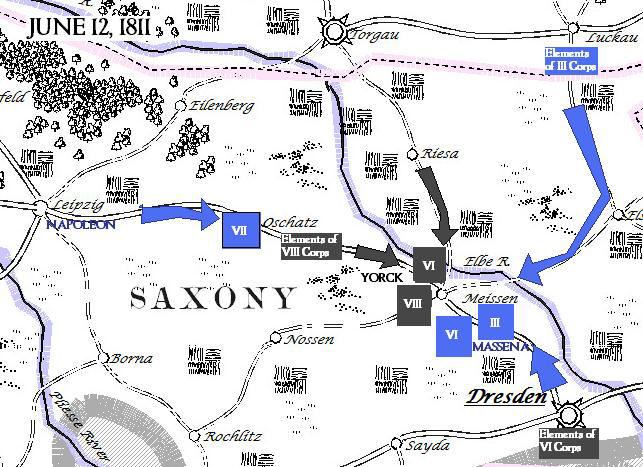 capital at Dresden. Also, this manoeuvre would allow the possibility of a flank
march on Leipzig. Marshal Massena, as the right wing of the Grand Armee, had
been tasked with holding the line of the Elbe and taking Dresden if the
opportunity was presented. So when, on June 10th, reports were received at
Massena's headquarters that 60,000 Prussians had crossed the Elbe at Meissen, he
immediately started to work at extracting his army from the siege of Dresden.
capital at Dresden. Also, this manoeuvre would allow the possibility of a flank
march on Leipzig. Marshal Massena, as the right wing of the Grand Armee, had
been tasked with holding the line of the Elbe and taking Dresden if the
opportunity was presented. So when, on June 10th, reports were received at
Massena's headquarters that 60,000 Prussians had crossed the Elbe at Meissen, he
immediately started to work at extracting his army from the siege of Dresden.
Yorck was not waiting for the French. The Prussian commenced to march on Leipzig, where he expected to find Napoleon's advance guard but as they got as far as Oschatz, reports came from Dresden that the French were there in force so Yorck turned his two corps about and returned to Meissen. Not all of the Oschatz force would arrive though for Marshal Bernadotte with VII Corps had caught them and forced an engagement at Oschatz.
While Massena marched toward battle at Meissen, he would hear that the two divisions that he had left at Dresden to mask it had been beaten by a sally of the Saxons from that fortress. They would be driven back toward Sayda.
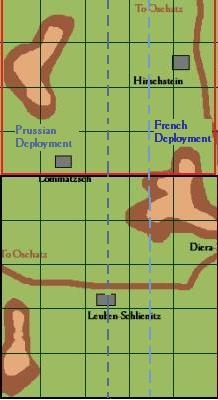 The two
small armies would camp through the night across from one another. Yorck had
selected a battlefield northwest of Meissen where the ground would favour his
cavalry. The Prussian was expecting three divisions from Oschatz and hopefully
some from Dresden. Massena knew that Napoleon in Leipzig knew that he would be
seeking battle at Meissen but he'd yet heard no word as to whether the Emperor
would be able to send any troops.
The two
small armies would camp through the night across from one another. Yorck had
selected a battlefield northwest of Meissen where the ground would favour his
cavalry. The Prussian was expecting three divisions from Oschatz and hopefully
some from Dresden. Massena knew that Napoleon in Leipzig knew that he would be
seeking battle at Meissen but he'd yet heard no word as to whether the Emperor
would be able to send any troops.
In the morning, the weather was a light rain. General Yorck's plan was to deploy his infantry with artillery support in the center, heavily supported by cavalry that would react to all attempts by the French to attack. The French would break upon the mass of Prussian combined arms. Marshal Massena's plan was not subtle: attack across the line and see what happens. The intention was to use close columns to deny Prussian cavalry any opportunity to intervene in the infantry attacks.
The armies were moving toward one another at 1000 hrs but the Prussians soon stopped and began to deploy their artillery. The French continued forward, filled with confidence. Both sides would find that their much anticipated reinforcements would be delayed by 90 minutes later than initially expected.
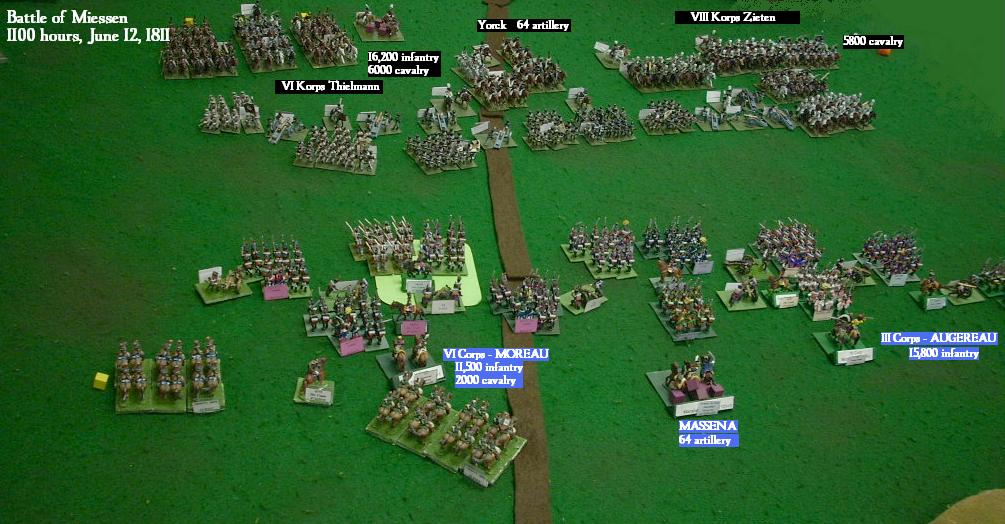
The Prussians would get in a good charge almost immediately on the French left, routing some infantry by good use of combined arms. The French cavalry though would time their counter-attack well, relying on the Prussian cavalry to continue on recklessly. It happened entirely as expected and the French second line was able to form square. The French Hussars were able to counter-charge, rout a cavalry brigade, an infantry column, and even take out a battery of heavy artillery. Prussian General of Division Sterk would also be slain by the charging Hussars.
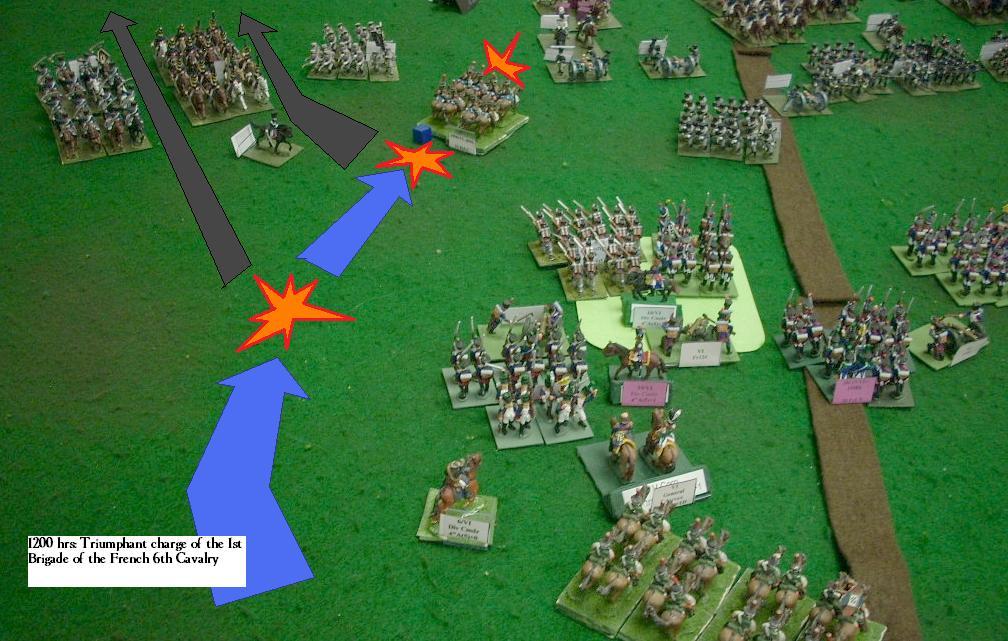
The French attacks go in well enough but no longer do their troops have inherent advantages over their opponents. Fully half their column-on-column assaults would be repulsed and where the Prussian cavalry is able to find room to advance in support, the results are often catastrophic for the French brigades.
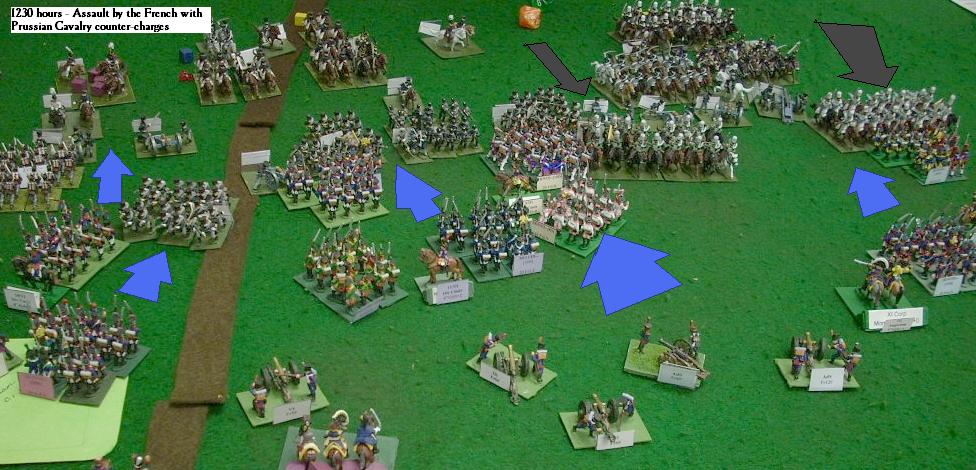
The French assault all across the line quickly runs out of steam and already Augerau's III Corps is fighting to simply hold the field, so many of their brigades have been sent reeling back. Moreau, with VI Corps, sees that as tough as it will be, he must risk continuing the attack to save the right wing.
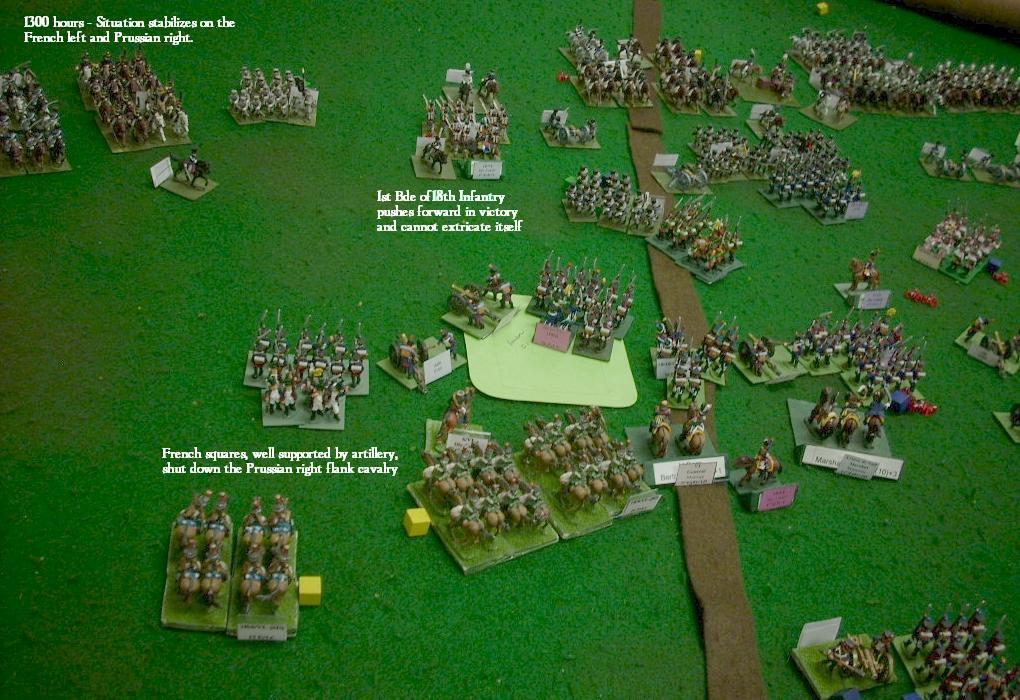
General Zeiten, having some 7000 Prussian cavalry available in the center and left, perhaps allows an opportunity to pass by. Instead of ordering all of the horseflesh forward in a thunderous and daring charge, he reins it in and pushes his gun line forward. He would force the French into squares and hope to destroy the isolated units with cannon fire.
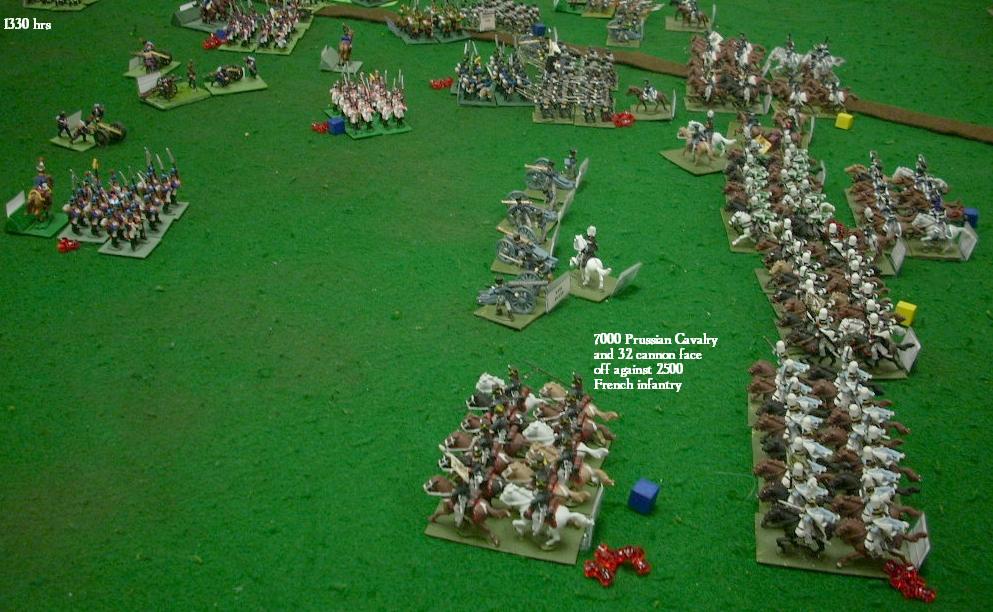
The French left begins to make some headway but still, Prussian cavalry would seem to ever sweep in from somewhere unseen and throw back all significant French successes.
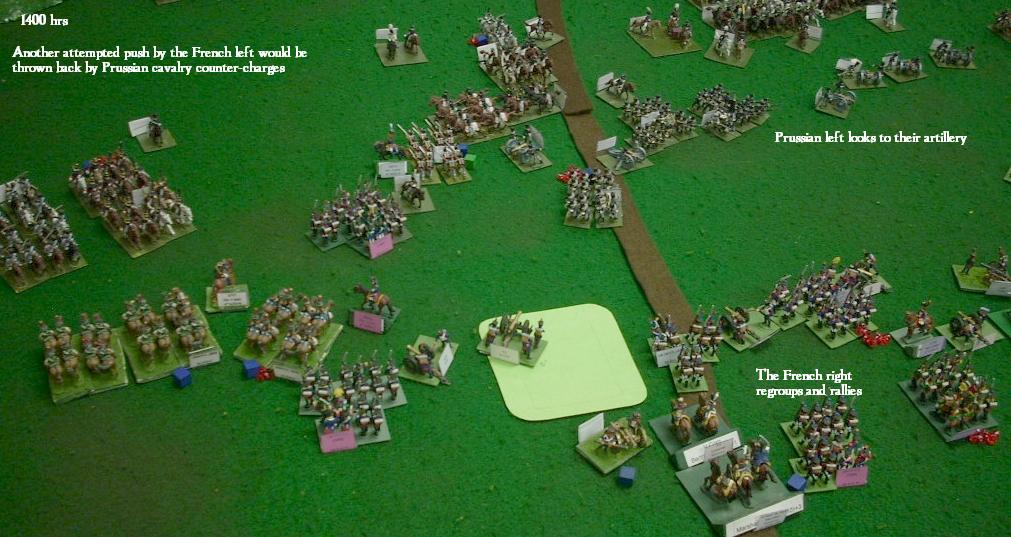
Reinforcements finally arrive and begin to make their presence felt. The French get 2500 light cavalry while the Prussians have 8,500 infantry and 24 more cannon arrive from Oschatz. They bring news of Bernadotte's French corps pressing hot on their heels. With the reinforcements and the time allowed, Augereau begins to rally his corps and send the recovered brigades forward to rebuild his line.
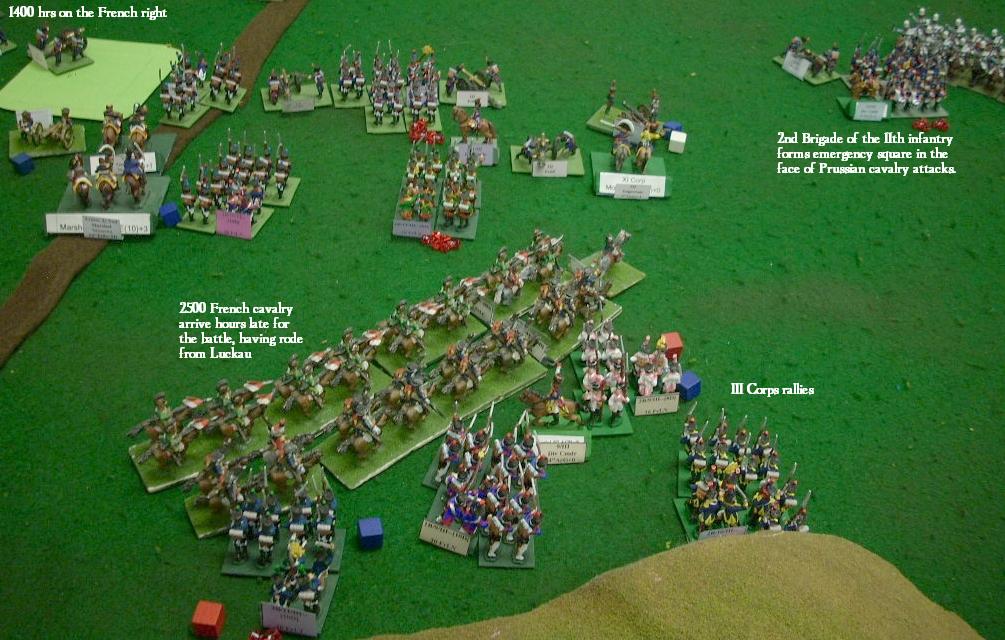
The French are beginning to win the artillery duel, damaging many Prussian batteries but not destroying them. The Prussian infantry in the center would eventually be dispersed from the field leaving only the three brigades from Oschatz as a viable Prussian infantry force. As storm clouds threaten an early end to the battle, Yorck would order his forces forward in fairly reckless attacks. He seeks to gain what earlier delays had already lost him. The French line holds.
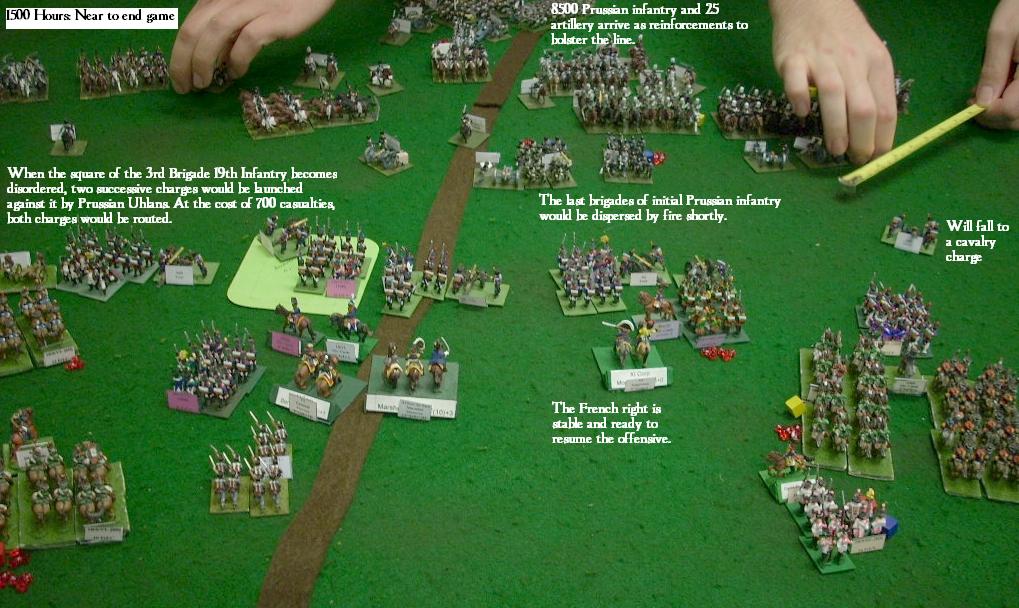
As the battle would draw to a close, Massena's army would have one brigade routed (cavalry) and one infantry brigade dispersed. Yorck's army would have 11 brigades out of the fight (the army would break on 12). While the French attack stalled at various times while commanders went back to rally brigades, the Prussians kept their generals on the front rank and made no concerted effort to rally. Not trusting to his forces at Oschatz and certainly not wanting to have Napoleon arrive behind him in the night with at least a Corps, General Yorck orders a withdrawal to Riesa. Marshal Massena would be in no condition to oppose that retreat.
It is a French victory but the Prussian cavalry will need to be fought again, for it is intact.
Estimated Allied Casualties: 6,000
Estimated French casualties: 8,000